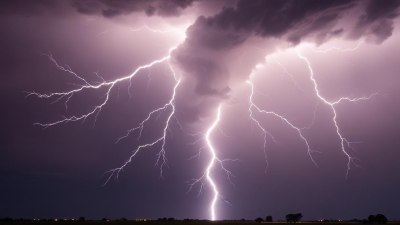Why You Start Cleaning Your Workspace During a Cold Snap
Discover why cold snaps inspire workspace cleaning and how this habit can boost productivity and well-being.

Image created with Flux Schnell
As the icy breath of a cold snap sweeps through the city, many people find themselves compelled to engage in an activity that might seem unrelated to the weather: cleaning their workspace. This seemingly peculiar behavior has psychological and physiological roots, and understanding them can enhance not only our tidying routine but also our efficiency and mental health during the colder months.
The Psychological Impact of Cold Weather
Cold snaps bring more than just a drop in temperature; they influence our mood and behavior profoundly. Shorter daylight hours combined with chilly temperatures often induce a state called Seasonal Affective Disorder (SAD) in susceptible individuals, leading to feelings of lethargy or mild depression. One natural response to these emotional shifts is the desire to exert control over our immediate environment, which often manifests as cleaning and organizing our spaces.
Cleaning provides a sense of order and accomplishment, which can counterbalance the chaos or unpredictability we feel due to harsh weather. Psychologists suggest that this act of control is comforting, reaffirming stability when external conditions feel unstable or threatening.
Biological Triggers and the Tidying Impulse
On a biological level, colder temperatures trigger changes in our body chemistry and routines. For example, melatonin production increases because of reduced sunlight, making us feel sleepier and less motivated to engage in physically demanding activities such as cleaning. However, the urge to clean can arise as a countermeasure, initiating movement that boosts endorphins and energy levels, thereby lifting spirits.
Furthermore, cold weather often interrupts our usual outdoor activities, leaving us with more indoor time. This increased indoor presence prompts larger amounts of accumulated clutter to become more noticeable. The built-up disarray demands attention, motivating individuals to tidy up in preparation for prolonged indoor occupancy.
Cultural and Historical Associations
Historically, many cultures associate cold or winter seasons with cleaning and renewal rituals. For instance, the concept of spring cleaning, while associated with the arrival of warmer seasons, is preceded by preparation phases during colder months. This cultural pattern shows that people psychologically align seasonal changes with cycles of cleansing and renewal. In many households, cold snaps act as natural markers prompting the transition into more meticulous care of the living and working environment.
Additionally, some traditions involve preparing spaces during winter for protection against the harshness of the cold months or upcoming festivities. This practice instills a habitual connection between specific weather conditions and cleaning activities, further reinforcing the impulse to organize during colder periods.
The Workspace as a Reflection of Mental Clarity
Our workspace is often seen as a direct reflection of our mental state. A cluttered desk or disorganized office space can lead to more distractions and increased feelings of stress and anxiety. During a cold snap, when motivation may already be low, a messy area can exacerbate feelings of helplessness and disorientation.
By cleaning and decluttering our workspace during a cold snap, we not only make our surroundings more pleasant but also improve our cognitive performance. Studies have shown that a clean, organized workspace enhances concentration, reduces stress, and encourages systematic thinking—benefits especially useful during times when productivity might otherwise falter due to environmental or emotional stressors.
Practical Reasons: Preparation for Winter Work Patterns
Cold snaps often signify a shift in work patterns. Many people begin to spend more time indoors, sometimes transitioning to remote work or adjusting their daily schedules to accommodate shorter daylight hours and colder temperatures. Organizing the workspace becomes a practical necessity, allowing smoother daily routines and reducing time lost searching for materials or equipment.
In addition, winter months typically involve more indoor meetings, virtual conferences, or increased paperwork. Ensuring a clean and orderly workspace prepares professionals to handle these demands efficiently. A tidy desk can lead to faster access to essential documents, better ergonomics, and a general sense of professionalism during client or team interactions.
Emotional Detoxification Through Cleaning
Cleaning is often described as a form of emotional detoxification. The physical act of clearing clutter can symbolically represent letting go of mental burdens and emotional buildup. During a cold snap, when people might introspect more or experience heightened stress related to seasonal changes, this process becomes even more meaningful.
The repetitive motions involved in cleaning can be meditative, helping people calm their minds. It offers an opportunity to create a fresh start both physically and mentally, which is especially refreshing during a season that otherwise might encourage stagnation or withdrawal.
Social Influences and Group Behavior
Social and workplace cultures also influence why people clean their workspaces during a cold snap. Office environments that emphasize tidiness may see a surge in cleaning activity as employees collectively respond to the seasonal change. Encouragement from supervisors or coworkers can create a domino effect, where the act of one person tidying up inspires others to follow suit.
In addition, social media trends and popular articles about productivity and mental well-being often encourage workspace decluttering during winter, framing it as a self-care practice. These external influences amplify the natural inclination to clean during cold weather.
The Role of Light in Motivating Cleaning
Reduced natural light during winter months impacts not only mood but also motivation. Exposure to daylight is crucial in regulating circadian rhythms and energy levels. When light diminishes, our bodies crave stimulating activities to offset the lull. Cleaning, with its tangible and immediate results, provides a satisfying and motivating task during these low-light periods.
People may rearrange desks to face windows or improve artificial lighting as part of their cleaning routine, further enhancing workspace appeal and positively impacting their mood and productivity.
Creating a Comfortable and Efficient Workspace for Winter
Cold weather invites the creation of cozy environments that support ongoing work comfort. Along with tidying, people often reorganize their materials, add blankets or insulating pads, bring in warm beverages, or integrate scented candles. These actions transform the workspace into a sanctuary that encourages focus and reduces stress during harsh weather.
This intentional effort to adapt the environment demonstrates a proactive approach to coping with seasonal challenges, making the workspace a source of warmth, both physically and mentally.
How to Harness the Cold Snap Cleaning Impulse Effectively
Recognizing the natural tendency to clean during cold snaps can be advantageous. Planning ahead by setting specific cleaning goals can improve both the quality of the environment and personal well-being. For example, dedicating time each day during a cold snap to clear specific areas—such as sorting documents, organizing digital files, or disinfecting surfaces—can make the process manageable and rewarding.
Combining cleaning with other self-care activities, such as listening to music or taking breaks for stretching, can further enhance motivation. Additionally, incorporating plants or personal decorative touches during the cleaning can brighten the dreary winter atmosphere and enliven the workspace.
Potential Pitfalls to Avoid
While cleaning during a cold snap has many benefits, it is important to avoid falling into perfectionism or compulsive cleaning. Setting unrealistic expectations can lead to frustration or burnout, especially when energy levels are compromised by the season. Balancing cleaning activities with adequate rest and other signs of self-care ensures that this impulse remains positive and health-promoting.
Also, be mindful of ergonomic factors while cleaning and rearranging furniture to prevent physical strain or injury, common risks when engaging in intensive tidying or deep cleaning sessions.
Long-Term Benefits Beyond the Cold Snap
Adopting a habit of cleaning workspaces during cold snaps can have lasting benefits. Establishing routine organization practices can lead to sustained productivity improvements and stress reduction throughout the year. It also fosters a mindset of adaptability and awareness of environmental and emotional cues, which supports resilient coping strategies for other seasonal changes.
Moreover, a clean and inviting workspace can encourage more active engagement in work or creative projects, supporting career growth and personal satisfaction.
How Employers Can Support Workspace Cleaning
Organizations can harness the momentum of seasonal cleaning tendencies by promoting initiatives that encourage workspace organization during cold months. Providing resources such as cleaning supplies, organizing tools, or designated cleaning days can motivate employees. Incorporating these efforts into broader wellness programs acknowledges the mental health benefits of a tidy environment.
Additionally, offering flexible schedules or breaks during cold spells to allow for personal space management reinforces a positive workplace culture and can improve overall productivity.
Technological Aids for Winter Workspace Organization
Technology can also assist in maintaining an organized workspace during winter. Apps designed for task management, digital decluttering, or even guided cleaning routines can help structure efforts, making the process less overwhelming. Virtual reminders and checklists encourage consistency and set clear objectives aligned with the mental clarity gained from a clean workspace.
Digital minimalism complements physical decluttering, addressing the often-overlooked mess in our electronic devices and email inboxes, which can accumulate unnoticed during busy periods.
Integrating Mindfulness and Cleaning Practices
Some wellness experts advocate for combining mindfulness practices with cleaning to deepen the psychological benefits. Approaching cleaning as a mindful activity—focusing fully on the sensations, movements, and environment—can enhance relaxation and presence. This approach transforms a routine chore into a restorative practice, directly countering winter blues and fostering emotional balance.
Mindful cleaning encourages gratitude for one’s workspace and promotes intentional living, useful perspectives in maintaining motivation during cold, challenging seasons.
Key Motivations
In summary, the impulse to clean workspace during a cold snap is multifaceted, driven by psychological comfort seeking, biological responses to seasonality, cultural traditions, and practical needs. The intersection of these factors highlights the significance of our environments as extensions of internal states and demonstrates how changing conditions external to us influence personal behaviors.
By understanding these motivations, individuals can consciously use cold snaps as triggers to optimize their workspace for better mental health, productivity, and overall well-being.
Ultimately, the cold snap serves as a natural cue prompting reflection, renewal, and reorganization, encouraging a healthier and more harmonious work-life experience.











